#HIV resources
Explore tagged Tumblr posts
Text
#Donald Trump#transgender#nonbinary#transphobia#Trans Ban#Trans#Sarah McBride#gender policy#science#federal LGBTQIA+ protections#executive orders#LGBTQIA+ Rights#Anti-LGBTQIA+#LGBTQIA+#Marco Rubio#State Department#passports#X gender markers#Joe Biden#trans military ban#clearing way for new ban#trans Soldiers#military ban#trans ban#Trump administration#LGBTQIA+ resources#HIV resources#government websites#News
12 notes
·
View notes
Text
living for the absolute middle finger chappell will give towards the orange twat if she wins an award tonight
#grammys#chappell roan#you can remove the t from lgbt on gov’t websites#you can remove the hiv resources from the cdc website#but you will never silence this community
17 notes
·
View notes
Text
Given the bullshit of Trump and his asshole administration, I am posting a list of HIV resources
1. http://HIV.gov
2. http://HIVinfo.NIH.gov
3. http://HIV.VA.gov
4. http://state.gov/prepfar
5. http://ihs.gov/hivaids/
6. http://x.com/HRSAgov -> HRSA Ryan White & Global HIV/AIDS Programs
Please reblog this on this platform and any other platform you have (Instagram, Tiktok, Reddit, etc.) And please add more verifiable resources if you know any.
3 notes
·
View notes
Text
Lexi Love may be best known as the high-energy queen from season 17 of RuPaul’s Drag Race, but today, she’s making waves by sharing her HIV status and calling out the Trump administration. When President Donald Trump’s team overhauled the official White House website on inauguration day, not only was the Spanish-language version of the site taken down and the accessibility features wiped out, but all references to the LGBTQ+ community and HIV resources were pulled down from federal government webpages In the wake of the wake of this move by Trump, the trans queen took to Instagram to speak out and seems to have announced that she’s HIV-positive in the process. “My health and well being as an entertainer is at risk now,” Lexi wrote about the information being pulled from the White House website. “I am personally affected by this stance and will work to use this new platform to not only find resources for myself but those who I am connected to socially and here! I’m so sorry everyone! This is hard and it’s frustrating and it’s insulting.”
continue reading
#us#us pol#trump administration#whitehouse website#lgbt+ info pulled#hiv resources pulled#accessibility features pulled#spanish version pulled#lgbt+ rights#lexi love
5 notes
·
View notes
Text
hey so i just found out about mistr, a service that offers free sti testing and PrEP.
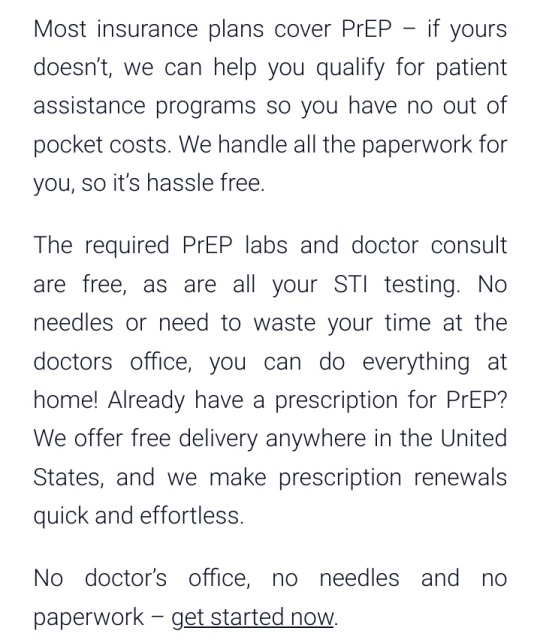
it looks pretty legit and i thought i'd share it here!
#gonna spam tags sorry#gay#queer#queer rights#lgbt#lgbt pride#lgbt resources#lesbian#bisexuality#bisexual#hiv#aids crisis#medical assistance#gay rights#lgbt rights#lgbtq#lgbtqia#lgbtq community#dantes talking again
30 notes
·
View notes
Text
Yesterday was Long COVID Awareness Day. Glad to see ACT UP NY (Instagram outlink) being in solidarity with Long COVID survivors.
Way too many queer folks forgot (links to a zine) about the HIV/AIDS denialism in the '80s and '90s.
If you're interested in agitprop posters designed based on old HIV/AIDS awareness campaigns (Wikimedia outlink), Anna, aka X/@_copy_of_a_copy, has a series of "ACT UP/MASK UP" posters (Google Drive outlink) along with a long list of resources. mx. papaya (Carrd outlink) created a series of "Where is your RAGE?" posters and "CDC Kills" (Google Drive outlinks). Cohost/@edania has also produced a few posters here and here.
#COVID-19#SARS-CoV-2#long COVID#long COVID Awareness Day#long haulers#COVID long haulers#COVID-19 long haulers#AIDS Coalition to Unleash Power#ACT UP#COVID pandemic#AIDS pandemic#AIDS crisis#HIV activism#AIDS activism#disability rights#COVID resources#SARS-CoV-2 resources#COVID-19 resources#agitprop#queer solidarity
11 notes
·
View notes
Text
Today is National HIV Testing Day! Check out the article above to learn everything you might want to know about HIV and AIDS, and use the links below to find a testing center near you.
US:
UK:
Canada:
Learn more about getting tested for STIs here:
#Get tested!#National HIV Testing Day#STIs#sex ed#HIV#AIDS#Please feel free to add testing resources for other countries!
27 notes
·
View notes
Text
We're nearly a week away from our next Southern Illinois Transgender Resource Fair!

It won't be an event to miss, whether you're looking for simple resources, a fresh haircut, or a chance to chat with health professionals - swing by Rainbow Cafe's new building anytime between 3 to 7 PM on Friday, August 11th OR the pavilion across the street for free food catered by Bake Me Happy and live music from Jennifer Kathryn Davolt plus...
Free haircuts AND yoga from E. Claire Beauty
Free binders (from RC!)
Free binder massages by Alex Nikul Waller
Free clothes, makeup, shoes, hygiene products, and more!
Free legal name and gender marker change assistance with OUTlaw Trans Legal Name Change & Gender Marker Clinic
Transgender voice therapy/training with the SIUC Clinical Center
Voter registration with Carbondale Unitarian Fellowship's social action team
Trans-related trivia with the SOIL Sisters - The Dirtiest Hoes of the Sacred Heartland
Pelvic floor therapy with Bridget Shepherd Rose
Employment, resume, and college assistance with ManTraCon Corporation
Food security assistance with SIU Medicine Center for Rural Health and Social Service Development
Medicaid and health insurance assistance with Shawnee Health
Health professionals that offer hormone replacement, mental wellness, and letter referrals from Choices: Center for Reproductive Health, Planned Parenthood of Illinois, Shawnee Health, Arrowleaf, and Centerstone
Free Narcan, condoms, Plan B, HIV testing, pregnancy tests, assault whistles, pads, and COVID tests from amazing resource and community organizations like The Center for Empowerment and Justice, The Community Action Place, Inc., SIU Medicine Center for Rural Health and Social Service Development, Midwest Access Coalition, and The Little Resource Center
Amazing community groups like CARE - Carbondale Assembly for Radical Equity, GRIS- Golden Rainbows of Illinois South, OUTMemphis, Metro Trans Umbrella Group, Uniting Pride, Carbondale United, Survivor Empowerment Center, Carbondale Tool Library, Caritas, The Night's Shield, Pride in Action, Southern IL, Southern Illinois Pride Collective, Gaia House Interfaith Center, First Presbyterian Church of Carbondale IL, SIU WGSS, SIU Multicultural Resource Center, and the SIU Women's Resource Center!
#lgbt#lgbtq#lgbtqia#queer#gay#trans#transgender#nonbinary#ftm#mtf#trans masc#trans femme#southern illinois#carbondale#siu#resources#sisters of perpetual indulgence#binding#chest binding#hiv#narcan#overdose prevention#hrt
2 notes
·
View notes
Text
Omg and people two cubes down from you have no idea what your abbreviations and acronyms and special jargon are and sometimes you'll be talking with another professional in the field and *think* you're both using the same acronym but you're NOT.
No one tells you when you get a Big Serious Job™ how many fucking abbreviations you’ll be forced to learn.
#this is enough of a problem that at the big national conference i went to for work this year the us dshs had clearly instructed all the#presenters to say the full goddamn name and not just use the acronym. department of state health services (dshs said dishes)#health resources and services administration (hrsa said hersa)#and that's not even for the really particular acronyms & abbreviations lol#but it did have to be intelligible to people at all levels of expertise so. like i get it#but it didn't stop presenters from throwing AZT around! me mentally updating them: ZDV XD which is still not the full modern name#anyway azidothymidine (azt) aka zidovudine (zdv) brand name Retrovir was the first and for way too long only effective ART antiretroviral#therapy and is still used today especially to prevent mother-to-child HIV human immunodeficiency virus transmission but also in other uses#and my silly brain took quite a while to stop seeing azithromycin and calling it azt. yes the letters are there. no the antibiotic isn't ART#and DEFINITELY ABSOLUTELY do not put such notes as “pt was administered AZT” when it was in fact azithromycin. oh but the abbreviation is#just sitting right there...so easy...NO. NOMENCLATURE CLARITY IN NOTES TO BE READ BY OTHERS. it is important.#meanwhile my team's dshs consultant be like argh yet another event note with random abbreviations#it's uh...it's hard not to use them...
43K notes
·
View notes
Text

“Did you know? 1/4 of new HIV infections occur in people ages 13-24. Up to 60% don’t know they’re infected, and may unknowingly spread the virus.”
-HIV can be spread through unprotected sexual contact, being poked or injected with a contaminated needle, from mother to fetus, or through infected blood products.
-50%(+/-) of all new HIV cases occur in the Southern States. Southern states have the highest rates of new HIV diagnoses, the largest percentage of people living with HIV, and the most people dying from it.
-HIV, the human immunodeficiency virus, is what causes AIDS (acquired immunodeficiency syndrome)
-HIV infects helper T cells, which normally have 2 functions:
•to activate B cells that produce antibodies
• to activate Killer T Cells that destroy infected cells
-Without Helper T Cells functioning properly, you cannot effectively fight off pathogens.
-People with AIDS die of a secondary infection because their immune system is compromised and cannot fight off pathogens that a healthy person can.
Note: these stats are relevant only to North America
0 notes
Text
So apparently some Swiss company found out that Brazilian blood has more immunoglobulin (which is used in some medications made by pharma companies) than European blood, and now international pharma companies are lobbying to change Brazilian law to allow them to use our blood as a resource
There is no current evidence that those things are related, but it just so happens that at the same time there is also another law being discussed that would get rid of "bureaucracy" when it comes to ethics analyses of trials on humans. It would also remove the right, which all brazilians currently have, to access to the medication resulting from the trials they participated in
Both sources are in Portuguese because both news have been recently broke by a Brazilian investigative news agency, but if you don't speak it, you can always use automatic translation
I know there's a lot of fucked up shit happening in the world right now, but please pay attention to medical rights in Brasil right now. Especially if you're European, because virtually every company related to this is from your continent and plans to benefit you above all
ETA: using blood as a resource for these medications is not new; however, current law in brasil only allows that use to come from donated blood (because it comes from the plasma and apparently not all of it is used in blood transfusion; I'm not a doctor so I'm not clear on the details but that's the gist of it) and to be processed and used by Hemobrás, the State-owned company that handles this type of medical technology. The new law would allow for private companies to buy our blood from blood banks for their use. It is worth noting that at least one company has already explicitly stated that they won't be making the resulting medication available in the Brazilian market, so, essentially, they will be taking blood Brazilians donated to help other Brazilians and using it to treat immunocompromised Europeans, to the detriment of immunocompromised Brazilians that need the medicine. In the process, they will be making it harder for our State-owned company to use that same blood, forcing us to import from them and therefore making the medication more expensive. They also want to make it possible for Brazilians to sell their own blood - a deeply ethically questionable practice that is discouraged by the WHO and that has led to HIV outbreaks in Brasil in the past
#i hate it here i hate it here i HATE IT HERE im sick of this shit#social justice#geopolitics#latin america#brasil#brazil#social issues#latine shit
20K notes
·
View notes
Text
Here's the top 2 stories from each of Fix The News's six categories:
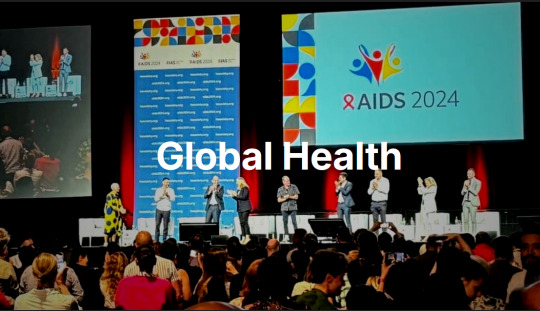
1. A game-changing HIV drug was the biggest story of 2024
In what Science called the 'breakthrough of the year', researchers revealed in June that a twice-yearly drug called lenacapavir reduced HIV infections in a trial in Africa to zero—an astonishing 100% efficacy, and the closest thing to a vaccine in four decades of research. Things moved quick; by October, the maker of the drug, Gilead, had agreed to produce an affordable version for 120 resource-limited countries, and by December trials were underway for a version that could prevent infection with just a single shot per year. 'I got cold shivers. After all our years of sadness, particularly over vaccines, this truly is surreal.'
2. Another incredible year for disease elimination
Jordan became the first country to eliminate leprosy, Chad eliminated sleeping sickness, Guinea eliminated maternal and neonatal tetanus, Belize, Jamaica, and Saint Vincent & the Grenadines eliminated mother-to-child transmission of HIV and syphilis, India achieved the WHO target for eliminating black fever, India, Viet Nam and Pakistan eliminated trachoma, the world’s leading infectious cause of blindness, and Brazil and Timor Leste eliminated elephantiasis.
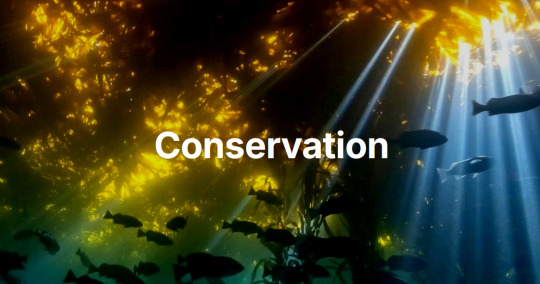
15. The EU passed a landmark nature restoration law
When countries pass environmental legislation, it’s big news; when an entire continent mandates the protection of nature, it signals a profound shift. Under the new law, which passed on a knife-edge vote in June 2024, all 27 member states are legally required to restore at least 20% of land and sea by 2030, and degraded ecosystems by 2050. This is one of the world’s most ambitious pieces of legislation and it didn’t come easy; but the payoff will be huge - from tackling biodiversity loss and climate change to enhancing food security.
16. Deforestation in the Amazon halved in two years
Brazil’s space agency, INPE, confirmed a second consecutive year of declining deforestation in the Brazilian Amazon. That means deforestation rates have roughly halved under Lula, and are now approaching all time lows. In Colombia, deforestation dropped by 36%, hitting a 23-year low. Bolivia created four new protected areas, a huge new new state park was created in Pará to protect some of the oldest and tallest tree species in the tropical Americas and a new study revealed that more of the Amazon is protected than we originally thought, with 62.4% of the rainforest now under some form of conservation management.
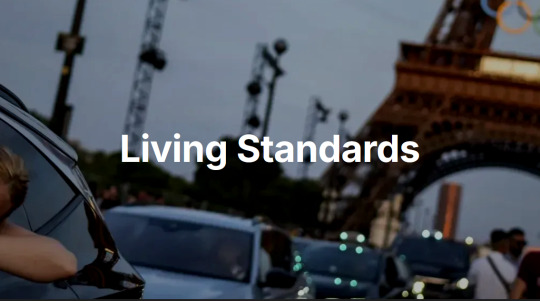
39. Millions more children got an education
Staggering statistics incoming: between 2000 and 2023, the number of children and adolescents not attending school fell by nearly 40%, and Eastern and Southern Africa, achieved gender parity in primary education, with 25 million more girls are enrolled in primary school today than in the early 2000s. Since 2015, an additional 110 million children have entered school worldwide, and 40 million more young people are completing secondary school.
40. We fed around a quarter of the world's kids at school
Around 480 million students are now getting fed at school, up from 319 million before the pandemic, and 104 countries have joined a global coalition to promote school meals, School feeding policies are now in place in 48 countries in Africa, and this year Nigeria announced plans to expand school meals to 20 million children by 2025, Kenya committed to expanding its program from two million to ten million children by the end of the decade, and Indonesia pledged to provide lunches to all 78 million of its students, in what will be the world's largest free school meals program.
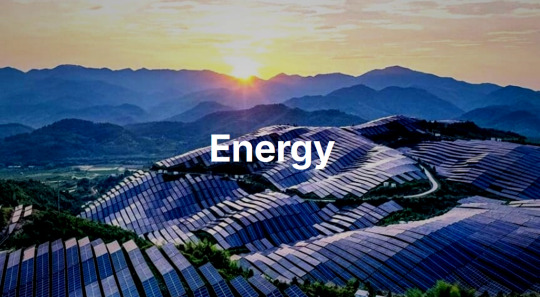
50. Solar installations shattered all records
Global solar installations look set to reach an unprecedented 660GW in 2024, up 50% from 2023's previous record. The pace of deployment has become almost unfathomable - in 2010, it took a month to install a gigawatt, by 2016, a week, and in 2024, just 12 hours. Solar has become not just the cheapest form of new electricity in history, but the fastest-growing energy technology ever deployed, and the International Energy Agency said that the pace of deployment is now ahead of the trajectory required for net zero by 2050.
51. Battery storage transformed the economics of renewables
Global battery storage capacity surged 76% in 2024, making investments in solar and wind energy much more attractive, and vice-versa. As with solar, the pace of change stunned even the most cynical observers. Price wars between the big Chinese manufacturers pushed battery costs to record lows, and global battery manufacturing capacity increased by 42%, setting the stage for future growth in both grid storage and electric vehicles - crucial for the clean flexibility required by a renewables-dominated electricity system. The world's first large-scale grid battery installation only went online seven years ago; by next year, global battery storage capacity will exceed that of pumped hydro.
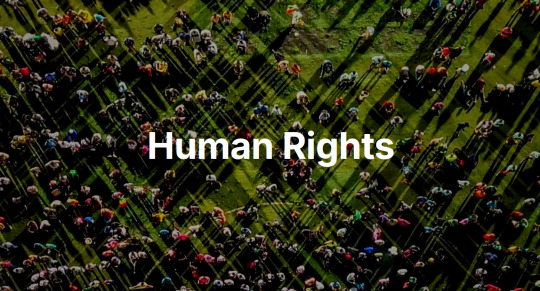
65. Democracy proved remarkably resilient in a record year of elections
More than two billion people went to the polls this year, and democracy fared far better than most people expected, with solid voter turnout, limited election manipulation, and evidence of incumbent governments being tamed. It wasn't all good news, but Indonesia saw the world's biggest one day election, Indian voters rejected authoritarianism, South Korea's democratic institutions did the same, Bangladesh promised free and fair elections following a 'people's victory', Senegal, Sri Lanka and Botswana saw peaceful transfers of power to new leaders after decades of single party rule, and Syria saw the end of one of the world's most horrific authoritarian regimes.
66. Global leaders committed to ending violence against children
In early November, while the eyes of the world were on the US election, an event took place that may prove to be a far more consequential for humanity. Five countries pledged to end corporal punishment in all settings, two more pledged to end it in schools, and another 12, including Bangladesh and Nigeria, accepted recommendations earlier in the year to end corporal punishment of children in all settings. In total, in 2024 more than 100 countries made some kind of commitment to ending violence against children. Together, these countries are home to hundreds of millions of children, with the WHO calling the move a 'fundamental shift.'

73. Space exploration hit new milestones
NASA’s Europa Clipper began a 2.9 billion kilometre voyage to Jupiter to investigate a moon that may have conditions for life; astronomers identified an ice world with a possible atmosphere in the habitable zone; and the James Webb Telescope found the farthest known galaxy. Closer to Earth, China landed on the far side of the moon, the Polaris Dawn crew made a historic trip to orbit, and Starship moved closer to operational use – and maybe one day, to travel to Mars.
74. Next-generation materials advanced
A mind-boggling year for material science. Artificial intelligence helped identify a solid-state electrolyte that could slash lithium use in batteries by 70%, and an Apple supplier announced a battery material that can deliver around 100 times better energy density. Researchers created an insulating synthetic sapphire material 1.25 nanometers thick, plus the world’s thinnest lens, just three atoms across. The world’s first functioning graphene-based semiconductor was unveiled (the long-awaited ‘wonder material’ may finally be coming of age!) and a team at Berkeley invented a fluffy yellow powder that could be a game changer for removing carbon from the atmosphere.
-via Fix The News, December 19, 2024
#renumbered this to reflect the article numbering#and highlight just how many stories of hope there are#and how many successes each labeled story contains#2024#good news#hope#hope posting#hopeposting#hopepunk#conservation#sustainability#public health#energy#quality of life#human rights#science and technology
3K notes
·
View notes
Text
cdc website not working they want me to kill myself
#On a tangentially related note if anyone has good resources on the history of hiv in the gay community in the us I’m doing a research projec#Shitpost
0 notes
Text
from the number of asinine complaints about how "voting is NOT a form of harm reduction" because harm reduction is for ADDICTS! ONLY! I'm seeing around... all coming from OP blogs I don't recognize and which otherwise don't have much presence... well, that coordination alongside the timing of US politics sure feels like the Russian troll bots agitating again. (Yes, they absolutely infested Tumblr; I think @ms-demeanor had a great post about what the bots looked and felt like somewhere that I will have to try and track down tomorrow.)
The thing is, if you actually do know harm reduction well, the complaint makes no sense. It's not as if the origin of harm reduction is a secret or especially hard to find out more about. I am not exactly an expert in the field: I have a educated layperson's interest in public health and infectious disease, I'm a queer feminist of a certain age and therefore have a certain degree of familiarity with AIDS-driven safer sex campaigns, and I'm interested in disability history and self advocacy (and I would in fact clarify harm reduction as a philosophy under this umbrella). So I have about twenty years of experience with harm reduction as a philosophy basically by existing in communities whose history is intertwined with harm reduction, which means I know it well from many different angles, and I know how the story of the philosophy is generally taught.
See, this is a story that starts, as so many stories do, in the 1980s with something monstrous President Reagan was doing. In this case, it was the AIDS epidemic, and Reagan refusing to devote any money or time to what eventually became called AIDS (rather than the original GRIDS, which came with its own baked in homophobia). Knowing themselves abandoned by society in this as in all things, and watching as friends and loved ones died in droves, queers and addicts are two communities who see that they are the only resources that they collectively have to save each other's lives. Queers know that sex, even casual sex, is an important part of people's lives and culture... and people aren't going to stop doing it even if there's a disease, so how can it happen safely? Condoms. Condoms every time, freely available, easy and shameless, shower them on people in the street if you have to. (And other things: this is the origin of the concept of "fluid bonding", for example... both of which were concepts that were immediately adopted in response to COVID, like outdoor socially distsnced greetings and masks and "bubbles." That wasn't an accident. Normalizing sexual health tests and seeing hard results on paper before sex was a thing, too.)
Addicts, too, knew that using was going to happen no matter how earnestly people tried to stop. If it was that easy, addiction wouldn't exist. So: how do you make using safer for longer? If you could stop someone getting HIV before they could bring themselves to get clean, that's a whole life right there. If you could stop someone overdosing once, twice, a dozen times, that's more time you're buying them to claw themselves out of addiction and into a better place. Addicts see, right, needle sharing is getting the diseases spread, so cut down on needle sharing. Well, needles aren't easy to get hold of. Their supply is controlled because people who aren't prescribed needles are theoretically junkies, so taking the needles away makes it harder to use, right— and no one is complicit, and also you see fewer discarded needles lying around where they're unsanitary and unsafe, right? Except that people want to do a buddy a good turn, so they share if there's no other option, and they'll keep a needle going until it's literally too blunt to keep using if need be. So fighting needle sharing means making it easier to get needles to shoot up with: finding a place to discard used ones and get as many fresh ones as you need to use safely!
Making free needles available to junkies and free condoms for the bathhouses was not a popular solution with politicians, for perhaps obvious reasons. Nor was routine testing of the blood supply, because that cost money too. But these things work to stop the spread of disease. Thus the principle of harm reduction: policy interventions in response to communities that frequently engage in risky behavior should focus on whatever reduces aggregate harm by reducing the risk rather than by trying to reduce the behavior. The homos and junkies say look, all your societal judgement in the world hasn't stopped us being homos and junkies yet. You ain't going to look after us? We'll look after our own. And this is the form that takes. Not increasing the pressure to act like people who aren't is, but making it safer to be the people we are while we try to be the happiest versions of ourselves. Even if that means being morally complicit in a whole lot of casual sex and drug abuse.
The thing is, harm reduction is a philosophy rooted in the defiance of people who knew that their society thought they deserved to die painfully, young, invisible and alone. This is not the kind of thing that people come up with and get mad if you adapt it and share it, especially if you tell the story of where it came from. And importantly, harm reduction is not purely the child of addiction: that philosophy, from the get go, was cooked up to apply both to substance abuse and casual sex. It didn't just spread from addiction care; it was born straddling addiction care and queer & feminist health care.
So it doesn't make sense to see actual activists who know harm reduction well complaining that this is a term exhibiting semantic drift when we talk about voting as harm reduction. It's actually a good metaphor: you're reducing the overall risk of the worst case scenario metaphors by voting Democrat, at least until future votes can install a system where multiple parties can flourish on the political scheme. (Democrats and Republicans are essentially coalitions of a pack of arguing factions anyway, and those factions are essentially what would be classed elsewhere as a party in its own right; the US essentially just lumps political granularity rather than splitting it in our political system.) And anyone who understands harm reduction itself knows that.
So it's this wildly inorganic complaint being voiced repeatedly by different sources. Sounds like a pretty good flag for a potential psyop to me.
If you want to learn more about harm reduction and its history, especially from an addiction perspective, I cannot recommend Maia Szalavitz's Undoing Drugs: How Harm Reduction is Changing the Future of Drugs and Addiction (2022) highly enough. Szalavitz has a history of addiction of her own as well as being a clear and accessible writer with an excellent grasp of neuroscience and history. I have a lot of respect for her work.
2K notes
·
View notes
Text
when talk about disability & immigration, specifically “disabled people harder/not allow/cannot immigrate”, can we also like. be specific about. some group disabled people more affected n targeted than others? like disabled people who
with transmissible diseases & illnesses
HIV/AIDS
physical n mental disorders n disability that “may endanger public”
need (or assumed to need), or “depend on,” or “be burden on,” governmental support n benefits—like financial assistance, long term nursing home, group home, etc institutionalization
^ or likely become that in future
this incomplete list, n each government have different standard for each—like some countries ban you if you one of those, even if have own resources (like family) to support you.
n also want explicitly point out how vague some these are. how some these, is assume. is about future, you maybe in future need these so we deny now.
especially with right wing & facism rise in world. these disabled people often one of most vulnerable group people in own country. n they also group people most explicitly banned from escape to other countries. can we talk abt that too when we talk about blanket disability & immigration
reblog this version
759 notes
·
View notes
Text
as the federal government takes down all its HIV prevention resources and changes LGBT to LGB on official websites and pulls funding for HIV prevention and treatment abroad and removes X gender markers from passports and bans trans people from the military I want to remind everyone: a lesser evil was possible
960 notes
·
View notes